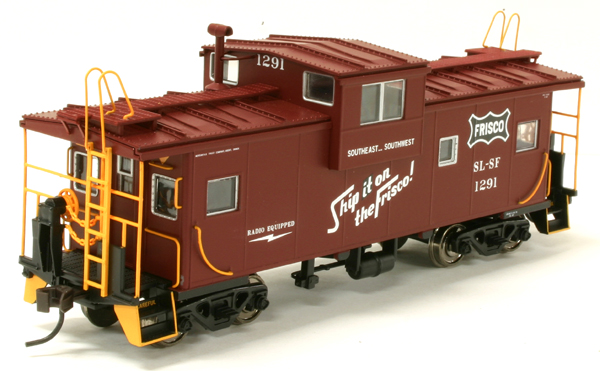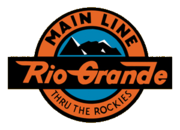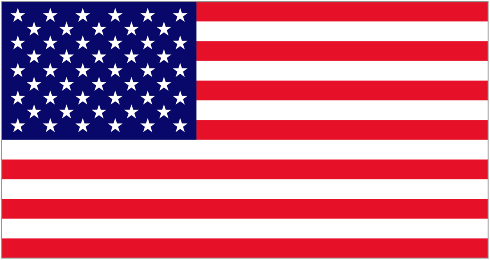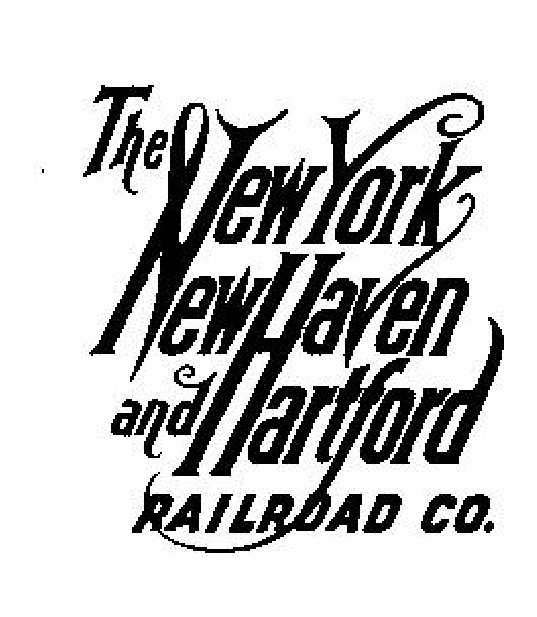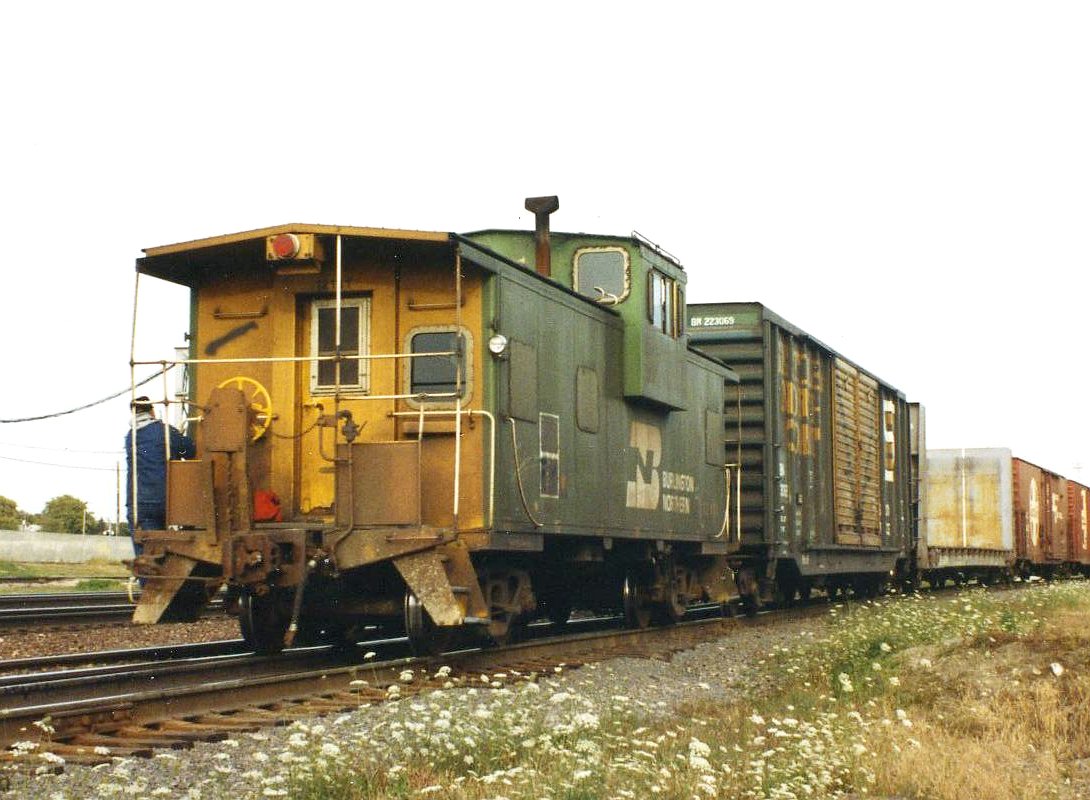Model Information: Atlas released the "30" series extended vision caboose in 1996. This model is very similar to the "43" series cupola caboose in most respects. It can be easily distinguished from the standard cupola caboose in that the cupola is wider than the body on the "30" series - hence the name "Extended Vision". This model may or may not have "loop-over" ladders.
It is re-released every other year (approximately). The original releases sported Rapido hook couplers, but interestingly the 1999 release had versions with Rapido as well as versions with real (licensed) Magnematic couplers. As of the 2009 run, it comes with Accumate couplers (only).
The current release from Atlas features:
It is re-released every other year (approximately). The original releases sported Rapido hook couplers, but interestingly the 1999 release had versions with Rapido as well as versions with real (licensed) Magnematic couplers. As of the 2009 run, it comes with Accumate couplers (only).
The current release from Atlas features:
- Thin endrails
- Window glazing
- Separate brake cylinder
- Open smoke stack
- Triple valve and air reservoir
- Roller-bearing caboose trucks
- Roofwalk where appropriate
- Accurate painting and lettering
- Now with AccuMate couplers
Prototype History: In the extended-vision or wide-vision caboose, the sides of the cupola project beyond the side of the car body. Rock Island created some of these by rebuilding some standard cupola cabooses with windowed extensions applied to the sides of the cupola itself, but by far, the greatest number have the entire cupola compartment enlarged. This model was introduced by the International Car Company and saw service on most U.S. railroads. The expanded cupola allowed the crew to see past the top of the taller cars that began to appear after World War II, and also increased the roominess of the cupola area.
Additionally, Monon Railroad had a unique change to the extended-vision cabooses. They added a miniature bay to the sides of the cupola to enhance the views further. This created a unique look for their small fleet. Seven of the eight Monon-built cabooses have been saved. One was scrapped after an accident in Kentucky. The surviving cars are at the Indiana Transportation Museum (operational), the Indiana Railway Museum (operational), the Kentucky Railway Museum (fire damaged), and the Bluegrass Railroad Museum (unrestored but servicable). The remaining three are in private collections.
Additionally, Monon Railroad had a unique change to the extended-vision cabooses. They added a miniature bay to the sides of the cupola to enhance the views further. This created a unique look for their small fleet. Seven of the eight Monon-built cabooses have been saved. One was scrapped after an accident in Kentucky. The surviving cars are at the Indiana Transportation Museum (operational), the Indiana Railway Museum (operational), the Kentucky Railway Museum (fire damaged), and the Bluegrass Railroad Museum (unrestored but servicable). The remaining three are in private collections.
Road Name History: 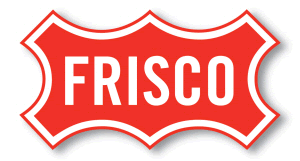 The St. Louis - San Francisco Railway (reporting mark SLSF), also known as the Frisco, was a railroad that operated in the Midwest and South Central U.S. from 1876 to April 17, 1980. At the end of 1970 it operated 4,547 miles (7,318 km) of road on 6,574 miles (10,580 km) miles of track, not including subsidiaries Quanah, Acme and Pacific Railway or the Alabama, Tennessee and Northern Railroad; that year it reported 12,795 million ton-miles of revenue freight and no passengers. It was purchased and absorbed into the Burlington Northern Railroad in 1980.
The St. Louis - San Francisco Railway (reporting mark SLSF), also known as the Frisco, was a railroad that operated in the Midwest and South Central U.S. from 1876 to April 17, 1980. At the end of 1970 it operated 4,547 miles (7,318 km) of road on 6,574 miles (10,580 km) miles of track, not including subsidiaries Quanah, Acme and Pacific Railway or the Alabama, Tennessee and Northern Railroad; that year it reported 12,795 million ton-miles of revenue freight and no passengers. It was purchased and absorbed into the Burlington Northern Railroad in 1980.
The St. Louis - San Francisco Railway was incorporated in Missouri on September 7, 1876. It was formed from the Missouri Division and Central Division of the Atlantic and Pacific Railroad. This land grant line was one of two railroads (the other being the M-K-T) authorized to build across Indian Territory. The Atchison, Topeka and Santa Fe Railroad, ATSF, interested in the A & P right of way across the Mojave Desert to California, took the road over until the larger road went bankrupt in 1893; the receivers retained the western right of way but divested the ATSF of the St. Louis-San Francisco mileage on the great plains. After bankruptcy the Frisco emerged as the St. Louis and San Francisco Railroad, incorporated on June 29, 1896, which also went bankrupt. On August 24, 1916 the company was reorganized as the St. Louis - San Francisco Railway, though the line never went west of Texas, being more than 1,000 miles (1,600 km) from San Francisco.
From Wikipedia

The St. Louis - San Francisco Railway was incorporated in Missouri on September 7, 1876. It was formed from the Missouri Division and Central Division of the Atlantic and Pacific Railroad. This land grant line was one of two railroads (the other being the M-K-T) authorized to build across Indian Territory. The Atchison, Topeka and Santa Fe Railroad, ATSF, interested in the A & P right of way across the Mojave Desert to California, took the road over until the larger road went bankrupt in 1893; the receivers retained the western right of way but divested the ATSF of the St. Louis-San Francisco mileage on the great plains. After bankruptcy the Frisco emerged as the St. Louis and San Francisco Railroad, incorporated on June 29, 1896, which also went bankrupt. On August 24, 1916 the company was reorganized as the St. Louis - San Francisco Railway, though the line never went west of Texas, being more than 1,000 miles (1,600 km) from San Francisco.
From Wikipedia
Brand/Importer Information: In 1924 Stephan Schaffan, Sr. founded the Atlas Tool Company in Newark, New Jersey. In 1933 his son, Stephan Schaffan, Jr., came to work for his father at the age of sixteen. Steve Jr. built model airplanes as a hobby and frequented a local hobby shop. Being an enterprising young man, he would often ask the owner if there was anything he could do to earn some extra spending money. Tired of listening to his requests, the hobby-store owner threw some model railroad track parts his way and said, "Here, see if you can improve on this".
In those days, railroad modelers had to assemble and build everything from scratch. Steve Jr. created a "switch kit" which sold so well, that the entire family worked on them in the basement at night, while doing business as usual in the machine shop during the day.
Subsequently, Steve Jr. engineered the stapling of rail to fiber track, along with inventing the first practical rail joiner and pre-assembled turnouts and flexible track. All of these products, and more, helped to popularize model railroading and assisted in the creation of a mass-market hobby. The budding entrepreneur quickly outgrew the limitations of a basement and small garage operation. Realizing they could actually make a living selling track and related products, Steve and his father had the first factory built in Hillside, New Jersey at 413 Florence Avenue in 1947. On September 30, 1949, the Atlas Tool Company was officially incorporated as a New Jersey company.
In 1985, Steve was honored posthumously for his inventions by the Model Railroad Industry Association and was inducted into the Model Railroad Industry Hall of Fame in Baltimore, Maryland. In addition, Steve was nominated and entered into the National Model Railroad Association Pioneers of Model Railroading in 1995.
In the early 1990s, the Atlas Tool Company changed its name to Atlas Model Railroad Company, Inc.
In those days, railroad modelers had to assemble and build everything from scratch. Steve Jr. created a "switch kit" which sold so well, that the entire family worked on them in the basement at night, while doing business as usual in the machine shop during the day.
Subsequently, Steve Jr. engineered the stapling of rail to fiber track, along with inventing the first practical rail joiner and pre-assembled turnouts and flexible track. All of these products, and more, helped to popularize model railroading and assisted in the creation of a mass-market hobby. The budding entrepreneur quickly outgrew the limitations of a basement and small garage operation. Realizing they could actually make a living selling track and related products, Steve and his father had the first factory built in Hillside, New Jersey at 413 Florence Avenue in 1947. On September 30, 1949, the Atlas Tool Company was officially incorporated as a New Jersey company.
In 1985, Steve was honored posthumously for his inventions by the Model Railroad Industry Association and was inducted into the Model Railroad Industry Hall of Fame in Baltimore, Maryland. In addition, Steve was nominated and entered into the National Model Railroad Association Pioneers of Model Railroading in 1995.
In the early 1990s, the Atlas Tool Company changed its name to Atlas Model Railroad Company, Inc.
Item created by: James on 2017-01-10 16:31:03. Last edited by James on 2017-01-10 16:32:57
If you see errors or missing data in this entry, please feel free to log in and edit it. Anyone with a Gmail account can log in instantly.
If you see errors or missing data in this entry, please feel free to log in and edit it. Anyone with a Gmail account can log in instantly.


